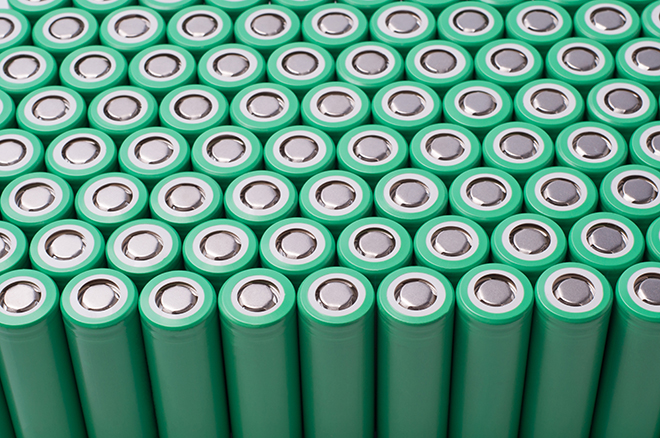DOE scientists at the Joint Center for Energy Storage Research (JCESR) have discovered a new magnesium-ion solid-state conductor, a major step towards making solid-state magnesium-ion batteries that are both energy-dense and safe.
The liquid electrolyte used in current lithium-ion batteries makes them potentially flammable. Researchers around the world are working to develop a practical solid-state electrolyte, which would be far more fire-resistant.
Researchers at the DOE’s Berkeley and Argonne National Labs were working on a magnesium battery, which offers higher energy density than lithium, but found that there was no good option for a liquid electrolyte. “Magnesium is such a new technology, it doesn’t have any good liquid electrolytes,” said Gerbrand Ceder, a Berkeley Lab Senior Faculty Scientist. “We thought, why not leapfrog and make a solid-state electrolyte?”
In a paper published in Nature Communications, Pieremanuele Canepa, Shou-Hang Bo and colleagues report that a material called magnesium scandium selenide spinel has magnesium mobility comparable to that of solid-state electrolytes for lithium batteries. “We have identified a new class of solid conductors that can transport magnesium ions at unprecedented speed,” Canepa said.
Co-author Baris Key, a Research Chemist at Argonne, conducted nuclear magnetic resonance spectroscopy experiments to prove that magnesium ions could move through the material as rapidly as the studies had predicted. “It was crucial to confirm the fast magnesium hopping experimentally,” Key said. “As we’ve shown in this study, an in-depth understanding of short- and long-range structure and ion dynamics will be the key for magnesium-ion battery research.”
“This probably has a long way to go before you can make a battery out of it, but it’s the first demonstration [that] you can make solid-state materials with really good magnesium mobility through it,” Ceder said. “Magnesium is thought to move slowly in most solids, so nobody thought this would be possible. But we still have work to do. This material shows a small amount of electron leakage, which has to be removed before it can be used in a battery.”
Source: EurekAlert!



















































